
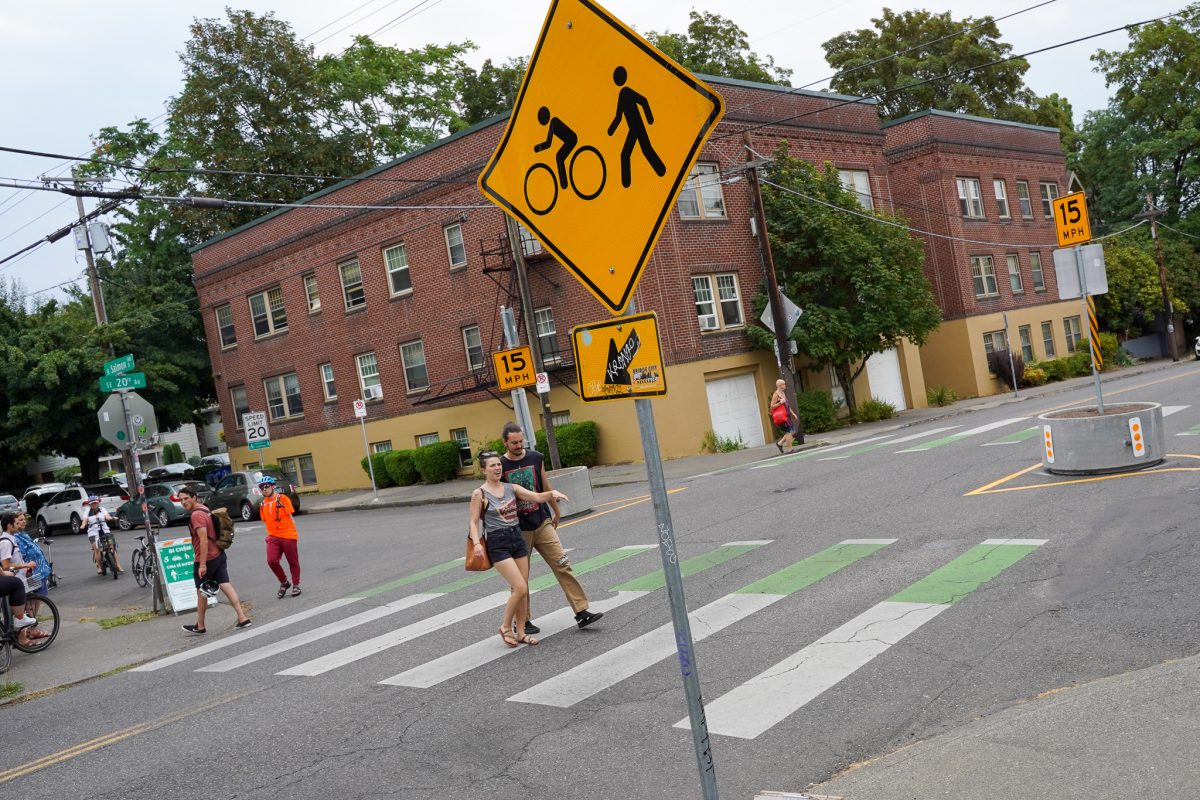
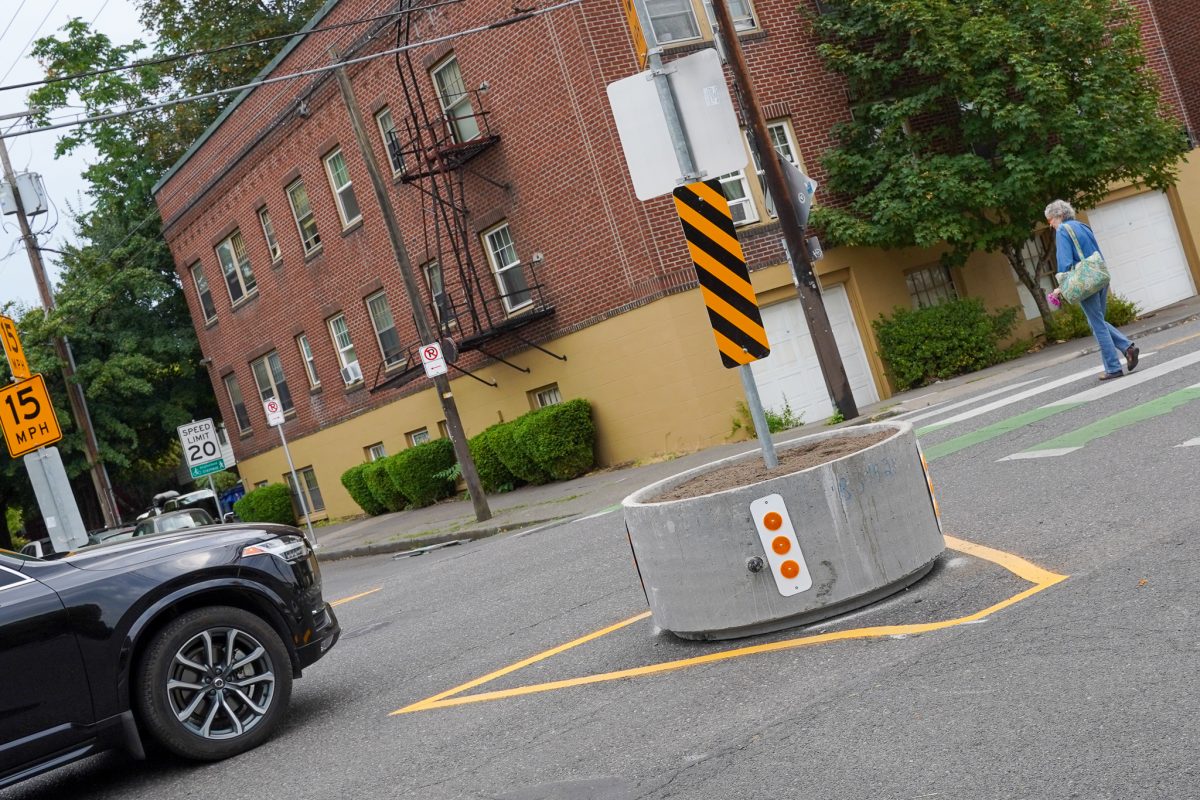
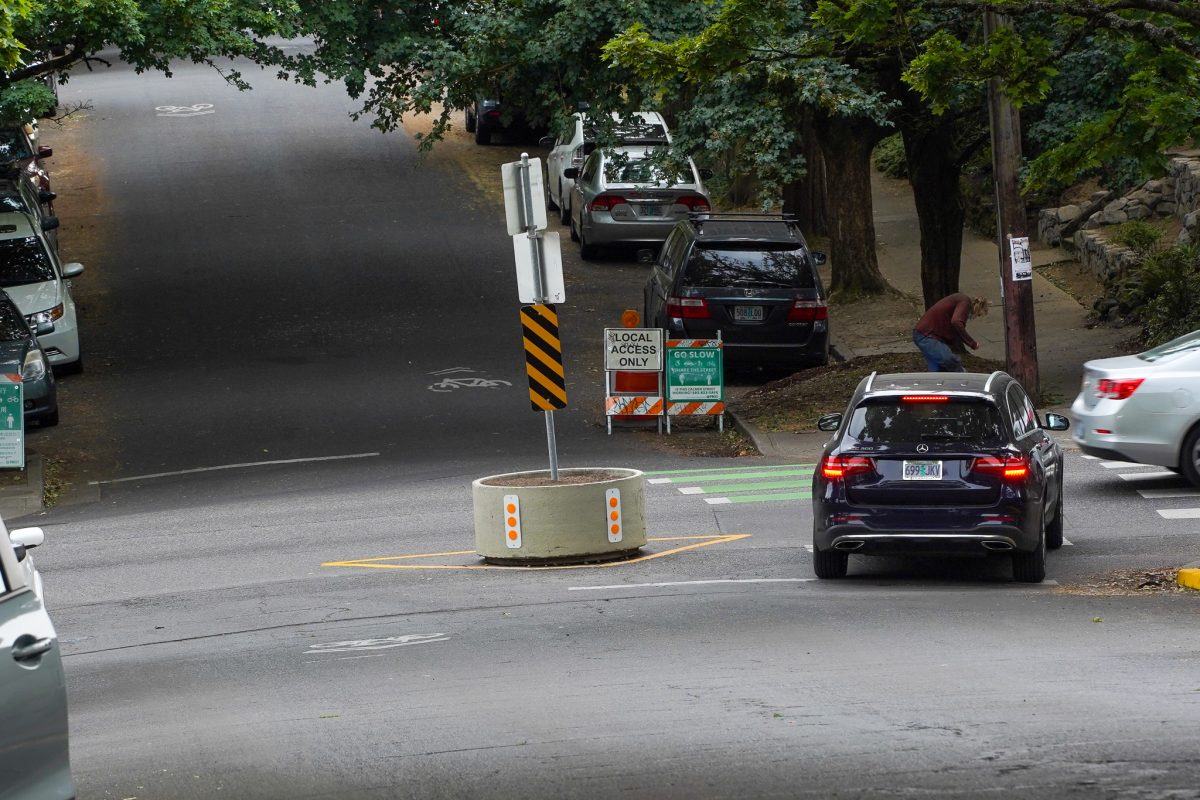
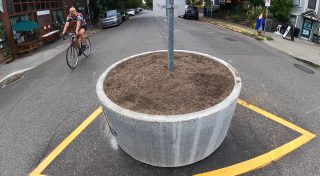
Last week’s announcement that the Portland Bureau of Transportation will install 80 concrete barrels on neighborhood greenways is a major step forward. After taking a closer look at a few installations over the weekend, I’m convinced these additions to our traffic calming arsenal will have having a big impact on safety and stress levels.
To refresh, these barricades are the next step in making PBOT’s ‘Slow Streets’ network more permanent. The Slow Streets emerged at the height of the Covid lockdown in 2020 as a way to facilitate safe outdoor mobility when a high volume of walkers, bikers, and rollers took to neighborhood greenways. Unfortunately, the initial step was rather anemic. The signs were frequently moved and/or hit and damaged by people who either didn’t want them in their way or who were unable to drive around them.
I visited several installations on Southeast Salmon, one on SE Stark, and one on Ankeny on Saturday and came away very impressed. Watch our latest video below and read why I think these are new concrete barrels are such a game-changer for Portland’s existing network of neighborhood greenways:

Advertisement
— At about four-feet in diameter and three-feet high — and full of soil — these barrels are heavy and take up a lot of space. On relatively narrow residential streets, this gives them a strong presence that competes much better with cars than a-frame signs and lightweight plastic barrels. Street safety is all about power. In situations where people feel they have limitless power, they drive more dangerously, take more risks, feel more entitled, and so on. When we take that power away by introducing something just as powerful and intimidating as they are — like a massive concrete barrier — drivers tend to behave much better. These concrete barrels equalize the power dynamic and provide a level of security for vulnerable users.
— As you enter the intersection on a bike, the barrels are like a shield against oncoming traffic. Similar to how curb extensions work for walkers on a sidewalk, these barrels allow bike riders to nose further out into the intersection, thus shortening the crossing distance.
— The 15 mph signage (and “Shared Street” iconography) is another hint to drivers that they’re entering a special place. Note that these are yellow advisory signs, so they aren’t legally binding. PBOT says their goal for these signs is for people to slow down while turning into a greenway and “have greater awareness that this is a shared street and that more pedestrians and people on bikes will be present.”
— The barrels are placed in the middle of the greenway street and are staggered from one side of the street to the other. This increases visual impact as you drive up to an intersection. The barrels also have the effect of narrowing the larger cross-street, which slows drivers down.
— One of the biggest impacts is how the barrels change driver turning movements. The presence of a large obstacle in the middle of the street forces drivers to make more deliberate, careful turns with sharper radii. They can no longer just roll straight through and/or lazily cut a corner.
— At a cost of just $1,500 to $3,200 per installation, these things are very cheap. And unlike a median island (which has similar benefits), they can be moved if necessary.
— We cannot underestimate the cumulative impact. Portland’s greenways already have a good bit of traffic calming infrastructure like speed bumps, roundabouts, diverters, medians, sharrows, signage, 20 mph speed limits, and so on. The addition of these barrels will further limit driving access and add to the inconvenience, frustration, and reduction in power that is so important to creating truly low-stress, family-friendly streets.
— The concrete barrels are a powerful complement to intersection daylighting, where PBOT prohibits parking within 20-feet of a curb to increase visibility.
I’m really excited about these! They’ll look even better when folks plant and paint them.
PBOT says all 80 of the barrels planned in the initial roll-out should be installed by mid-fall of this year. Check the map to see if any are coming to your neighborhood. And if not, you can request one by emailing PBOT Slow Streets program manager Scott Cohen at scott.cohen@portlandoregon.gov.

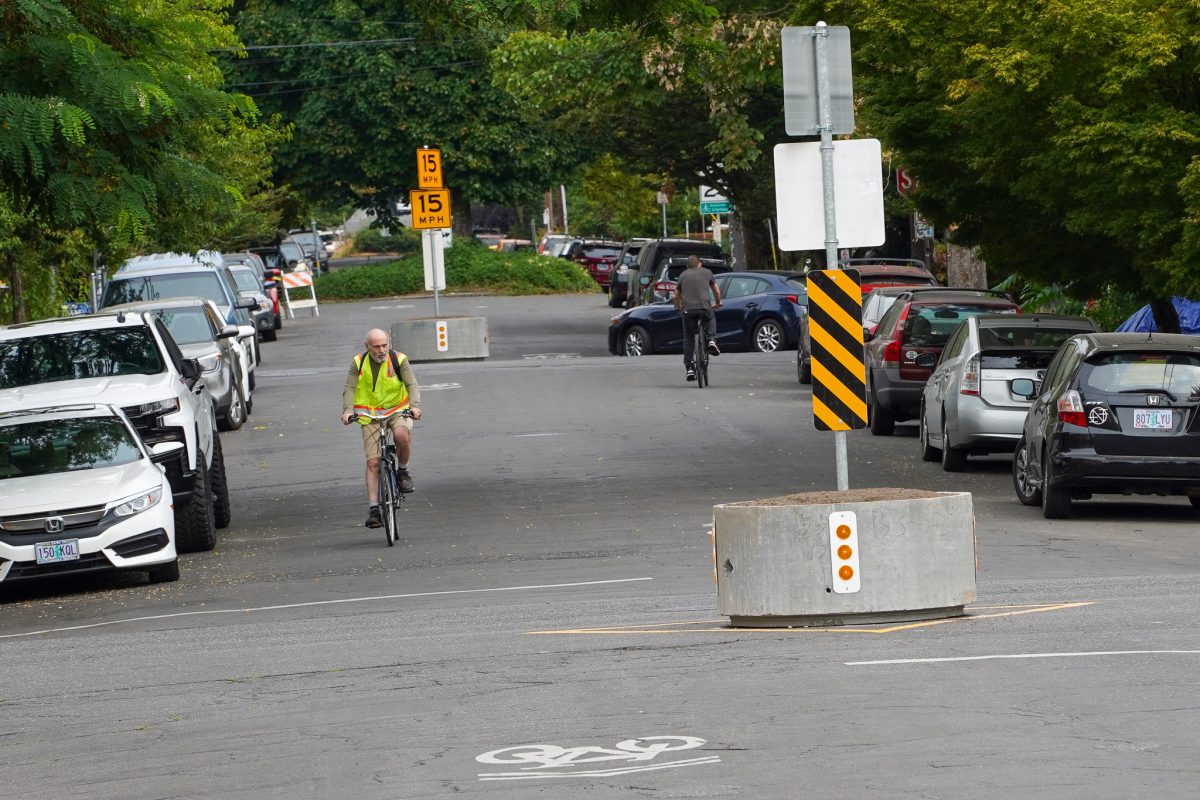



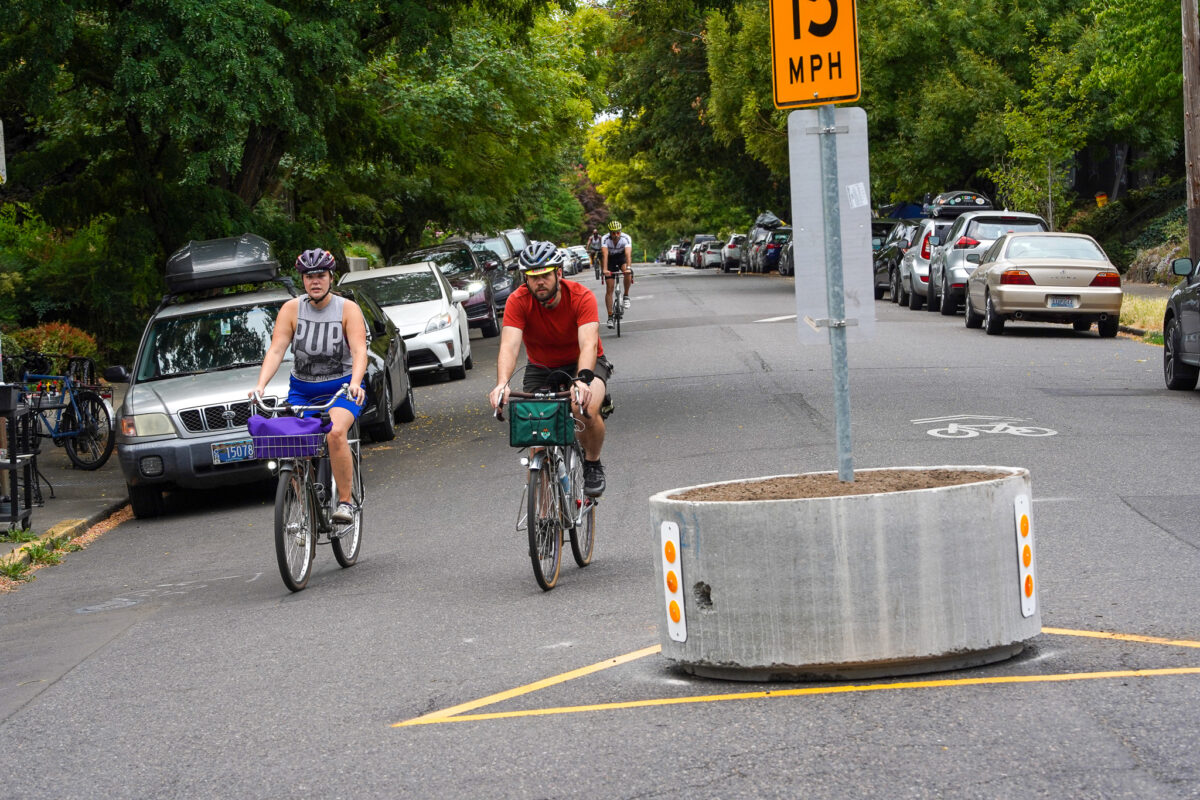
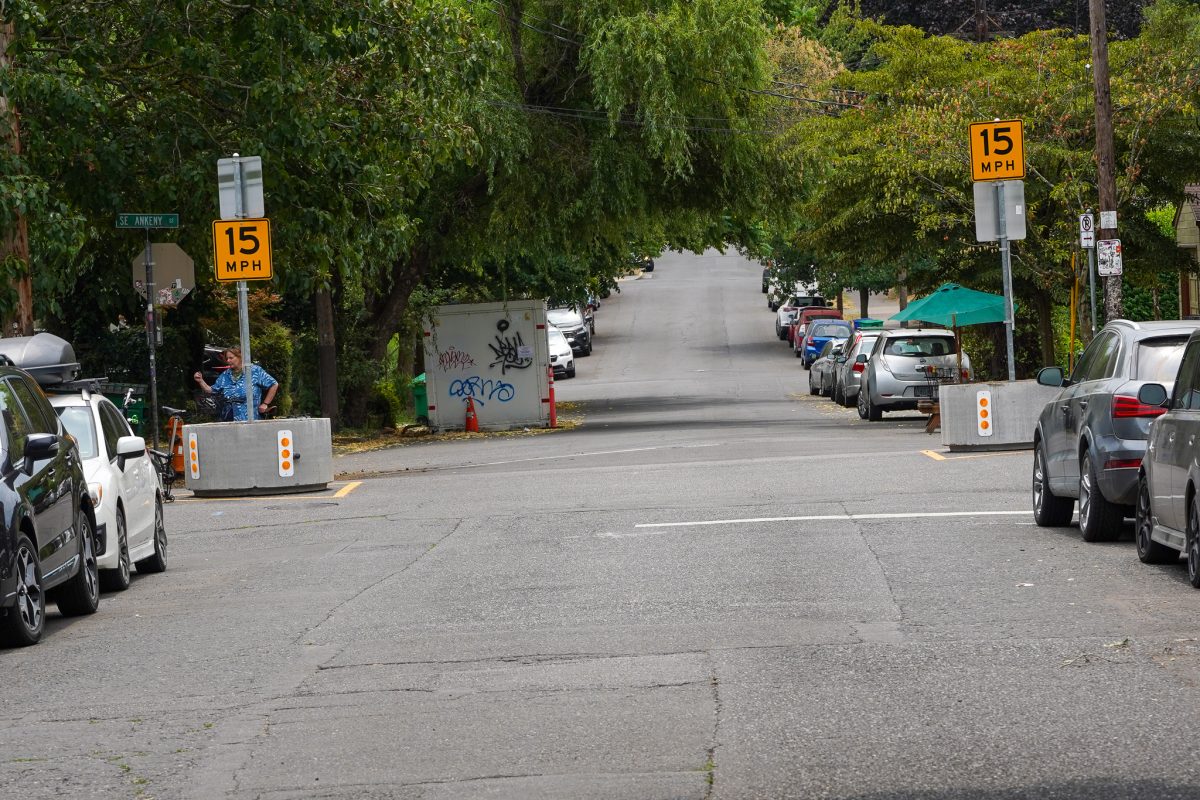

— Jonathan Maus: (503) 706-8804, @jonathan_maus on Twitter and jonathan@bikeportland.org
— Get our headlines delivered to your inbox.
— Support this independent community media outlet with a one-time contribution or monthly subscription.

